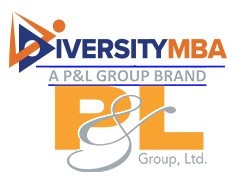- WHAT IS YOUR MISSION FOR DIVERSITY AND INCLUSION?
Diversity, inclusion, and culturally competent medical care are defining characteristics of UPMC. The framework for our diversity strategy – coined the UPMC Diversity & Inclusion Agenda – is designed to achieve the following:
- Enhance the diversity and cultural competency skill set of our employees.
- Provide culturally and linguistically competent care to improve the health status of our increasingly diverse patient and member population.
- Enrich the health status of those who live and work in the communities we serve.
- Grow our patient population and insurance membership through effective market segmentation strategies that target the fastest growing segments of the region.
- WHAT IS THE IMPORTANCE OF DIVERSITY AND INCLUSION IN THE HEALTH CARE INDUSTRY?
In some industries, there are only vague connections between diversity and the core work of the organization. Not with us at UPMC. Transformation is an urgent industry requirement, and cultural competency is fundamental to our transformation. Our employees are constantly assessing the direct link between culture, workforce productivity, community engagement, and health care outcomes to inform care delivery practices. We are intentional in our ongoing efforts to increase the capability to deliver culturally competent care to our patients and health plan members, recognizing that care needs may differ for individuals from diverse backgrounds.
- WHAT ARE SOME OF THE DIVERSITY AND INCLUSION INITIATIVES THAT HAVE ALLOWED YOUR ORGANIZATION TO HAVE IMPACT IN BOTH THE COMMUNITY AND IN THE WORKPLACE; THAT SUPPORTED DRIVING CHANGE AND/OR EQUITY.
There are significant diversity strategies that drive UPMC forward, allowing us to achieve our mission, and grow our business. A small representation of those are listed below:
- The Board of Directors: UPMC is committed to leading diversity and inclusion from the very top. In addition to the Chief Diversity and Inclusion Officer regularly updating the full Board of Directors, UPMC has an Inclusion and Diversity Committee of the Board that provides direct involvement in overseeing the diversity and inclusion function at UPMC.
- Executive Workforce Demographics: With the core belief that its workforce demographics should reflect the populations served throughout its footprint and its executive demographics should match that of its workforce, UPMC’s Board of Directors approved a five-year strategic goal to increase representation of people of color in executive roles and women in executive roles. Since established, we’ve increased people of color in executive roles by 30% with 47% of total executive hires being women.
- UPMC Scholars Program: In partnership with the School of Nursing at the University of Pittsburgh, UPMC awards scholarships to underrepresented Freshmen and Sophomore students and a tuition loan for Juniors and Seniors. Upon their graduation, these students, now new nurses, are guaranteed employment at one of UPMC’s urban hospitals.
- Disability Resource Center: To better serve its patients, guests, and members, UPMC members established the Disability Resource Center (DRC) with the goal of improving access to health care for its patients with disabilities. The staff of the DRC provide education and training, conduct reviews and assessments of its hospitals and facilities, and review policies and practices on accessible health care.
- Transgender Care Clinic: UPMC physicians have established a transgender care clinic to ensure patients are able to establish care with transgender-competent primary care doctors, which, in turn, decreases the difficulty some patients face navigating health care. Additionally, UPMC Health Plan’s LGBTQ Advisory Work Group assess strategies to maximize awareness and the overall experience for all UPMC members and patients in the LGBTQ community.
- Gun Violence Prevention: UPMC has developed a community strategy to support vulnerable communities that are disproportionately impacted by trauma resulting from gun violence. Realizing the many intricacies to gun violence prevention, this multifaceted strategy includes experts in the fields of public health, community engagement, government partners, hospital-based interventions, and workforce development.
- Pittsburgh Promise: Developed by the city of Pittsburgh and the Pittsburgh Public Schools, the Pittsburgh Promise is designed to give graduates of Pittsburgh’s public high schools the means to pursue postsecondary education, regardless of family income, at an accredited postsecondary institution in Pennsylvania.The objective for UPMC is simple – to maintain our positioning as the health care leader in leveraging organizational cultural competency, knowledge and expertise to our competitive advantage.
- WHAT LESSONS HAVE YOU LEARNED ALONG THE WAY AS A DIVERSITY LEADER; AS WELL AS WHAT WORDS OF ADVICE CAN YOU GIVE (ESPECIALLY GIVEN THE CURRENT CLIMATE OF COVID-19 PANDEMIC).
First, it is important to recognize that everyone will not connect with your personal diversity story or feel compelled to advance this important work because it’s the “right” thing to do. Like any other business function, it is critical to establish clear goals that detail the specific actions, responsibility, timelines, and measurements to embed diversity as a key element of your business infrastructure. Our administrators, scientists, and physicians work feverishly to determine how we best link culture to health care outcomes so that, for example, our understanding – and subsequently treatment of COVID-19 – allows us to understand disparities by rates of testing, positivity, hospitalization, and mortality.










